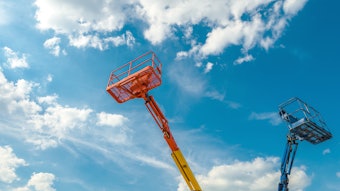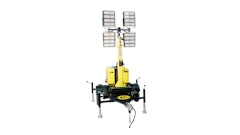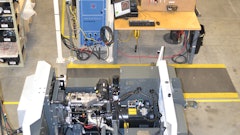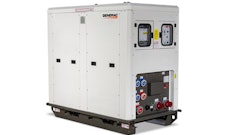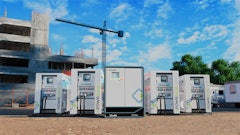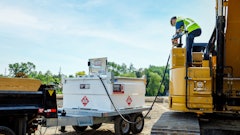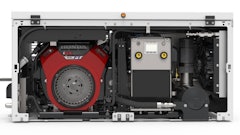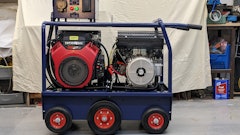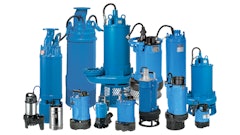
What is safety? Webster's Dictionary defines safety as, ”The condition of being protected from or unlikely to cause danger, risk, or injury.” So, what does this mean in the world of a prime power mobile generator fleet?
In this article, we will take a look at how to make sure that safety is a part of your business' everyday practice, as well as how to make it the number one priority when deploying your mobile generator fleet — for you, your customer, and the operators of the equipment.
We all consider safety every day: using PPE, chocking of tires to prevent a roll away unit, utilizing the safety chains in towing, or locking the doors to prevent unauthorized users access to the equipment. These are visible things that are easy to remember because they are right in front of us.
But what happens if dangers are unseen? What if the hazard is invisible to the naked eye? What if the hazard could seriously injure or even kill you? If you knew this potential danger was out there right in front of you, would you act differently around it? Would you take extra precautions to ensure your personal safety?
As we look at the safety aspect of the generator world, let’s look at a typical scenario. We walk up to a compact, perhaps construction-style, generator or light tower. We are told there is a problem with the unit, but we can both see and hear that the unit is running. Immediately, you start to assess the issue without caring too much because—well, let’s be honest, it’s small and there is not too much to worry about since it's on—so, really, what could go wrong?
But if the generator were larger, say, a 1-megawatt unit, would you ask the same question?
Here's the kicker: If the generator is running, no matter what size it is, there will be electricity being produced! Granted, it may not be running properly or putting out the proper voltage necessary to provide the site with correct power, but it is still putting out voltage at some measure. If there are volts present then there is a chance YOU become the amperage draw.
Therefore, proper security is a must in this situation; your personal safety depends on it. The only way to check for voltage is with a properly calibrated digital multimeter, and you can do so safely with personal security at the forefront of your mind. The saying goes, the higher the voltage, the lower the amperage. Conversely, the lower the voltage, the higher the amperage– and amperage is the invisible killer.
Here are some safety tips and tricks for deploying your mobile generator fleet:
- Lock out/tag out. To insure your personal safety and the safety of others around you, the first step you should take is lock out the unit from other users and tag out the unit to show you're taking on the responsibility of safety, security, and repair.
- Prepare your area of operation. There are a multitude of steps to consider in this operation. You should first preview your area and the surrounding area, so you can safely perform the setup or repair of the equipment in its location. Check for low wires, water, and unsafe trip hazards. And make sure you have proper PPE before starting any work.
- Only use dedicated electrical tools. To safely repair or set up the generator in a remote location (mobile generator), make sure to only use certified electrical tools and have the proper ones to do the job, for example, like a DVMM (digital voltage multimeter).
- Properly size cables with appropriate connectors. When setting up the generator, be sure you have the proper size cables to handle the amperage that is associated with the job. Also, make sure to use the proper wire end connectors, whether that be ringlets, eyelets, standoffs, or camlocks. This is important because there is nothing worse for you or the job to have the wrong size cables or incorrect ends on your cables once you are in the field.
- Know your load. Knowing what will be operating on the site can predetermine a lot of things. If you are going to deploy a mobile generator unit or you are repairing one on a jobsite, it's imperative that you know what the load is going to be. By sizing the generator and wires properly, you can safely operate the generator to the load and ensure good working health of the generator.
- Do not start the generator under load. When first deploying the generator or repairing after the fact, always be sure the main circuit breaker is in the off (open) position. This will ensure the load doesn't turn on immediately upon starting the generator. When turning the generator off, it's also important to turn the main circuit breaker off prior to the shut down procedure. Remember: The emergency stop is for emergencies only. Don't use it to turn off the generator under normal on/off circumstances.
- Test voltage and frequency prior to going live on load. Before attaching cables to camlocks or lug areas that are operated by the system's main breaker, be sure you have the proper voltage and Hertz to run the load. For the most part, diesel generators operate at 1,800 rpm, which is equal to 60Hz. This should result in the proper voltage selected from the mobile generator's voltage selector switch within 5 percent. Using the onboard controller of your genset in conjunction with your DVMM at the recommended test points provided by the manufacturer, test this voltage and adjust with the forward-facing potentiometer to get it to exactly what you need to operate the load. This will provide a proper set up for when you are ready to close the main breaker and go live.
Last but not least, NEVER, EVER RUN A GENERATOR INSIDE OF A BUILDING. Carbon monoxide can build up very quickly and kill you. Generators should be positioned at least 20 feet from any building with the engine exhaust directed away from windows and doors.



